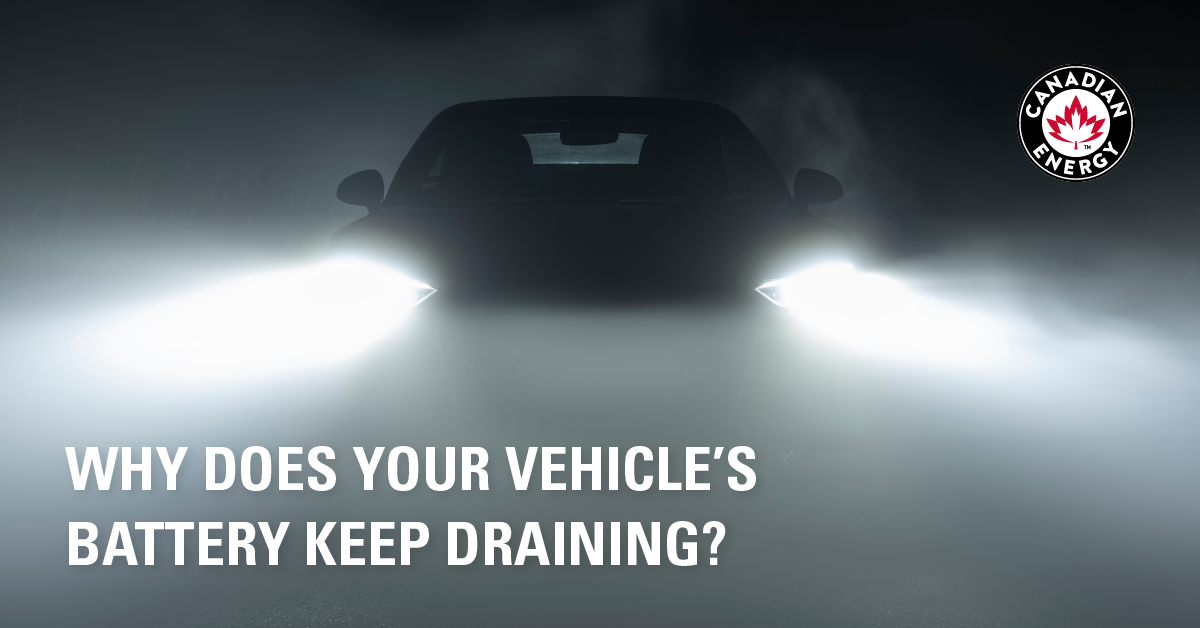Why your car battery is draining, and how you can prevent it.

It has happened to all of us - you come home after a long day, park your car, and head inside for the night only to wake up and find you've left your vehicle's lights on. If you're lucky, your car will start without problem, but there's always a chance you will be faced with a dead battery.
Accidentally leaving your interior lights or headlights on is a classic example of something that can quickly drain your vehicle's battery, but there are plenty of other potential reasons why your battery may be draining.
Let's break down some of these factors.
1. Leaving the lights on.
We know that leaving your lights on will drain your battery. Most newer vehicles will automatically turn the lights off after a certain period of time, but the lights on older cars will generally need to be turned off manually. On average, car batteries have a capacity of 45Ah with a vehicle electrical system voltage of 12V. If the interior lights are left on, your battery should be OK for approximately 27 hours. Unfortunately, this is only relevant if your battery is brand new and fully charged - which is normally not the case.
If your battery is already a few years, old it will die much faster and will need to be immediately recharged with a battery charger and load tested. You can test your battery by following the steps in our Battery Testing Video for best peace of mind.
2. Parasitic draws.
Parasitic draw (or parasitic drain) occurs when a vehicle's battery continues to power components even when the car is off. Signs of parasitic draw include cranking/clicking, dim headlights, backfiring, dashboard lights without starting, and increased number of jumpstarts.
Most vehicles experience a "normal" amount of battery drain due to parasitic draw, typically between 50 and 85 milliamps in newer cars and less than 50 milliamps for older cars. Excessive parasitic draw can be caused by short circuits and electrical components that remain on.
Some examples of these components are:
- Headlights
- Computer Modules
- Trunks
- Relay Switches
- Under-Hood or Glove Compartment Lighting
If these components are not in the "on" position and you are still experiencing excessive parasitic draw, you may have a faulty battery or a bad alternator diode.
3. Loose or corroded battery connections.
Your battery cannot transmit power properly if the terminals are corroded. Make sure you regularly check your battery and use our video guide to learn how to effectively clean corroded terminals. Ensure the positive and negative terminals have not come loose due to movement from your vehicle.
4. Extreme temperatures.
Freezing cold winter days or boiling hot summer days can cause problems for any battery. Although new batteries are typically more resistant to extreme temperature, it is important to keep your vehicle in a moderately tempered area whenever you can to avoid premature failure.
For batteries with patented acid mixing technology that eliminates thermal gradients and improves life at extreme temperatures, check out our MIXTECH batteries.
5. Driving habits & bad alternator.
Your vehicle's alternator recharges your battery while the engine runs, but it needs enough time to do so. If you are only taking 5-10 minute trips, your alternator never has enough time to properly recharge your battery. If possible, try to do 20 minutes of highway driving when possible to lengthen your battery's lifespan as much as you can.
If you have great driving habits but you're still having trouble starting your car after you've just been driving, you may have a bad alternator.
6. Your battery is old.
Even if you do everything right, batteries have a finite lifespan. In some cases, car batteries can last up to five years if properly maintained, but they will not last forever.
You can test your battery by following the steps in our Battery Testing Video to see if your battery is at the end of its useful life.
Canadian Energy has a team of battery specialists and an extensive range of battery technology available for every application. Visit on of our 19+ branches across Canada and allow one of our product experts to help you find a battery that fits your need.
